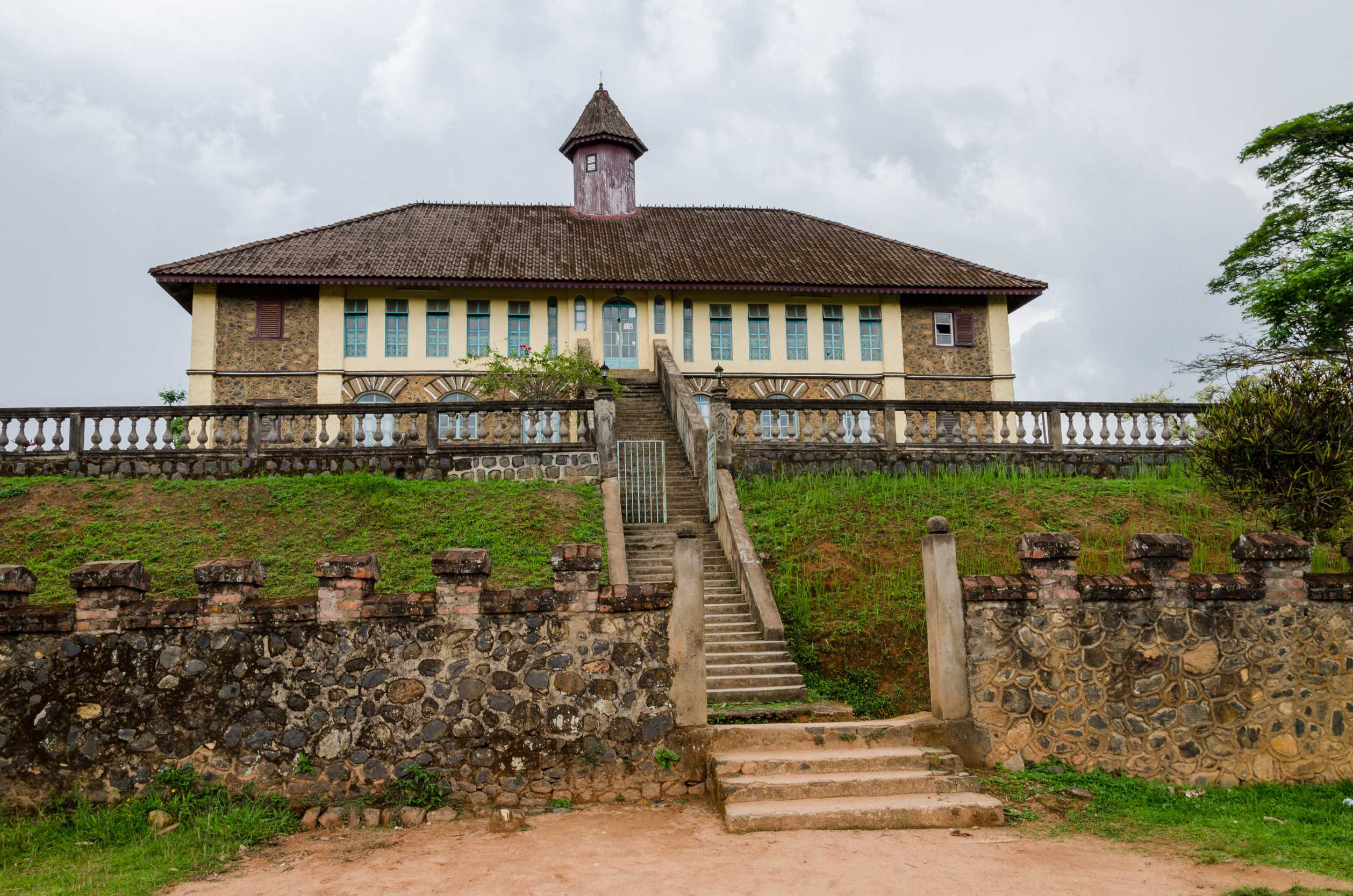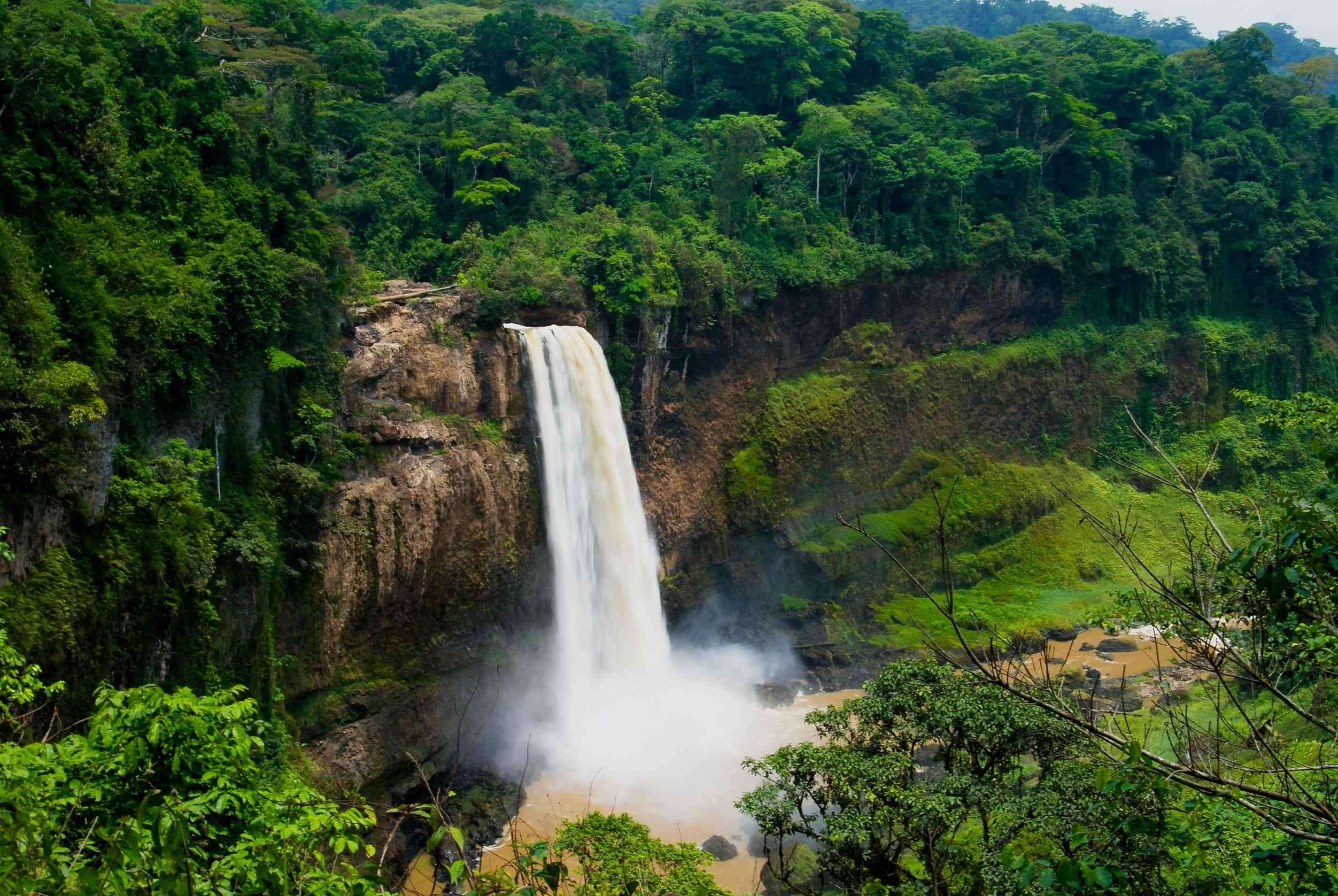Top 9 Historical Places to Visit in Cameroon

Cameroon, known for its rich cultural tapestry and diverse landscapes, is also home to numerous historical landmarks that reflect its complex past—from pre-colonial kingdoms to colonial encounters and independence struggles. For travelers seeking more than just natural beauty, these historical sites offer fascinating insights into the country's heritage and evolution. To explore these remarkable destinations with ease, it's advisable to apply for Cameroon eVisa in advance, ensuring a smooth and well-prepared journey into the heart of this historically vibrant nation.

1. Foumban Royal Palace and Museum (West Region)
The Foumban Royal Palace, located in the town of Foumban, is the historical seat of the Bamoun Kingdom, one of the most influential traditional monarchies in Cameroon. Constructed in 1917 by Sultan Ibrahim Njoya, the palace is a striking structure built with local materials, reflecting both African and Islamic architectural influences. Inside, visitors can view a stunning array of royal artifacts including intricately carved thrones, traditional weapons, ritual masks, musical instruments, and the personal items of past rulers. The Musée du Palais Royal (Royal Museum) adjacent to the palace adds depth to the visit, with exhibits on the Bamoun script (Shü-mom), invented by Sultan Njoya himself.
🌟 Why Visit:
The palace and museum provide a deep cultural and historical experience, offering insight into a precolonial African kingdom that maintained a high level of governance, artistry, and diplomacy. It's a rare opportunity to witness a living monarchy still respected by its people. The town of Foumban itself is also known as an artistic hub, with vibrant local craft markets and workshops producing beadwork, bronze casting, and traditional embroidery. A visit to the palace is often considered a cultural pilgrimage for anyone interested in Cameroonian history and African royal heritage.
2. Bimbia Slave Trade Site (Limbe, Southwest Region)
Nestled along the Atlantic coast near Limbe, Bimbia was once a bustling slave trading hub during the 17th to 19th centuries. The site contains the remnants of slave dungeons, iron shackles, trade negotiation spots, and the original coastal path leading to the embarkation point on the beach. There are also old stone structures believed to have been used by European traders, and information boards that narrate the harrowing journeys of the enslaved. The site has been recognized by UNESCO and is slowly being developed into a heritage destination.
🌟 Why Visit:
Bimbia is one of the few preserved slave trade landmarks in Central Africa. A visit here offers a powerful and emotional connection to the tragic legacy of the transatlantic slave trade. It also highlights the role played by local coastal communities, such as the Duala and Isubu, in the dynamics of slavery, colonialism, and resistance. Guided tours help contextualize the experience and provide space for reflection. The peaceful coastal scenery contrasts sharply with the site's dark history, creating a sobering and educational atmosphere for all visitors.
3. German Colonial Buildings in Buea (Southwest Region)
Set against the scenic backdrop of Mount Cameroon, Buea is a town steeped in colonial history. It served as the capital of German Kamerun from 1901 until the outbreak of World War I. The town still retains several well-preserved buildings from this era, including:
- The Old German Governor’s Residence, now used as the Prime Minister’s Lodge,
- The German Post Office, a brick structure still standing in the town center,
- Colonial schoolhouses, churches, and administrative offices built in Germanic architectural styles.
Many of these structures are still in use today and are accessible to the public, either through official permission or guided city tours.
🌟 Why Visit:
These colonial landmarks provide a unique architectural and historical lens into Cameroon’s early interactions with European powers. They mark the beginning of Western administration and infrastructure in the region, and also offer a comparative view into the transitions from German to British and French rule after World War I. Buea itself is a picturesque and cool highland town, offering a pleasant climate, views of Mount Cameroon, and a laid-back atmosphere. It's a perfect base for both history enthusiasts and nature lovers.
4. Reunification Monument (Yaoundé and Buea)
Cameroon’s reunification after colonial rule is memorialized in two key monuments: one in Yaoundé and the other in Buea. The Yaoundé Reunification Monument, located near the city center, is a towering spiral structure symbolizing the convergence of two entities—British Southern Cameroons and French Cameroon—into one nation in 1961. It features bronze statues of a man holding children, symbolizing generational continuity, and panels depicting significant events in Cameroon’s post-colonial history. The Buea Reunification Monument, while less imposing, also pays tribute to this political milestone and is surrounded by scenic views of Mount Cameroon.
🌟 Why Visit:
These monuments are more than landmarks—they are powerful symbols of national unity and serve as public spaces for reflection on Cameroon’s complex colonial history and its emergence as a bilingual republic. They are ideal spots for educational tours, photography, and gaining insight into the country's efforts at cultural and linguistic integration. The Yaoundé site, especially, is popular with students and visitors seeking to understand Cameroon’s national identity.
5. Chiefdoms of the Grassfields (Northwest & West Regions)
The Grassfields region of Cameroon, encompassing the Northwest and West Regions, is home to some of the country’s most vibrant traditional kingdoms or fondoms. Notable chiefdoms include Bafut, Bali, Bandjoun, and Babungo, each centered around a royal palace that acts as the seat of the Fon (traditional ruler). These palaces feature sacred groves, traditional council halls (Achum houses), courtyards for public ceremonies, and museums displaying heirlooms, thrones, masks, and ritual objects. Some fondoms also hold public events like dance festivals, initiation rites, and storytelling sessions.
🌟 Why Visit:
These chiefdoms are living cultural institutions that provide a rare window into precolonial African governance, spiritual traditions, and artistic expression. Many still function with full political and ceremonial roles in their communities. Visiting a fondom allows tourists to see traditional architecture, interact with custodians of oral history, and witness practices that have been preserved for centuries. Some, like the Bafut Palace, have been recognized by UNESCO for their cultural value.
6. Ekom Nkam Waterfalls & Sacred Legends (Littoral Region)

Located near Nkongsamba in the Littoral Region, the Ekom Nkam Waterfalls are among Cameroon’s most breathtaking natural attractions, plunging over 80 meters into a lush gorge. The site gained international fame when it was featured in 1980s Tarzan movies, but it’s much more than a film location. The surrounding area is steeped in Bamiléké mythology and oral traditions, with stories attributing the falls to ancestral spirits and powerful natural forces. Local guides often share tales about spiritual encounters and rituals that once took place near the falls.
🌟 Why Visit:
Ekom Nkam offers a blend of natural beauty and cultural depth. It’s an excellent destination for eco-tourism, photography, and spiritual exploration. Visitors can appreciate how Cameroonian folklore integrates with the environment, making the site a cultural landscape where nature and belief coexist. Hiking trails, nearby villages, and forest wildlife add to the experience
7. Kribi German Lighthouse and Slave Route (South Region)
Standing on the Atlantic coast since 1906, the Kribi German Lighthouse offers panoramic views of the ocean and town. It was built during the German colonial period and remains one of Cameroon’s oldest operational lighthouses. A short distance away are remnants of the slave route, particularly in Londji, where enslaved Africans were marched to the coast. Today, symbolic plaques and historical markers commemorate these sites.
🌟 Why Visit:
Kribi offers a rich combination of history and leisure. The lighthouse is an architectural relic of colonial maritime activity, while the slave route adds depth to the historical narrative of the region. Visitors can reflect on this difficult past while also enjoying Kribi’s serene beaches, fresh seafood, and relaxed coastal atmosphere. It’s a perfect blend of education and vacation.
8. Mandara Mountain Fortresses (Far North Region)
Located within the dramatic landscape of the Mandara Mountains, near the border with Nigeria, are ancient fortified settlements built by ethnic groups such as the Mafa, Kapsiki (Kapsiki Peak area), Podoko, and Toupouri. These structures, often constructed with stone and perched on cliffs or steep hillsides, include watchtowers, narrow passageways, and thick defensive walls. Many of the compounds are still in use today, blending ancient architecture with daily life.
🌟 Why Visit:
These mountain fortresses represent indigenous resilience and architectural ingenuity, developed as a response to frequent slave raids and conflicts in centuries past. They offer a fascinating glimpse into precolonial defense systems, traditional mountain life, and vernacular engineering adapted to rugged terrain. The area is also stunningly scenic, making it ideal for cultural hiking tours. Local guides provide context about the oral histories, rituals, and symbolism tied to the stone structures.
9. Museums of Cameroon (Various Locations)
📍 What to See:
National Museum (Yaoundé): Housed in the former presidential palace, the museum features a comprehensive collection of art, music instruments, historical photographs, colonial artifacts, and documents highlighting Cameroon’s political evolution.
Mus'Art Gallery (Bamenda): A regional cultural gem focused on Grassfields art, including detailed wood carvings, traditional masks, sculptures, and beadwork. Many of the pieces were created by renowned Cameroonian artisans.
Blackitude Museum (Yaoundé): This private collection, curated by Princess Marilyn Douala Bell, showcases royal artifacts, traditional costumes, pottery, and ancestral objects. It reflects the Bamoun royal lineage and broader Cameroonian heritage.
🌟 Why Visit:
Cameroon’s museums serve as gateways to its diverse cultural and historical identity, especially for visitors who want a deeper understanding of the country’s multi-ethnic roots, colonial past, and post-independence development. Each museum offers a different lens—national pride, regional artistry, or royal lineage—and is ideal for cultural immersion, particularly for those short on time but eager to engage with Cameroon’s layered history.
Cameroon’s UNESCO World Heritage Site Candidates
Explore various sites across Cameroon that have been proposed or are eligible for UNESCO World Heritage status. These include natural wonders, cultural landscapes, and historical sites deemed to be of outstanding universal value, highlighting potential future recognitions of Cameroon's heritage.
Sacred Forests and Traditional Shrines
Delve into the numerous sacred forests and traditional shrines scattered throughout Cameroon. These cultural landscapes hold immense ancestral significance for various ethnic groups, serving as sites for rituals, spiritual communion, and the preservation of indigenous knowledge and beliefs.
Local Perspectives on Preserving History
To truly understand the depth of Cameroon's historical places, incorporating local perspectives is crucial. Interviews or quotes from local historians, elders, and community leaders can provide invaluable insights into the ongoing efforts to preserve these sites and the challenges faced in maintaining their historical and cultural integrity. This human element adds a profound layer to the narrative of Cameroon's rich past.
Disclaimer: While this information was last updated in June 2025, we strongly suggest confirming all travel details with the appropriate governmental agencies, embassies, and airlines.
Applying for a Cameroon eVisa
- Step 1: Complete the online application form with your personal details and passport information.
- Step 2: Proceed to securely pay online using your credit card.
- Step 3: Check your email for payment confirmation and receipt of your Cameroon eVisa, which will be sent electronically.

